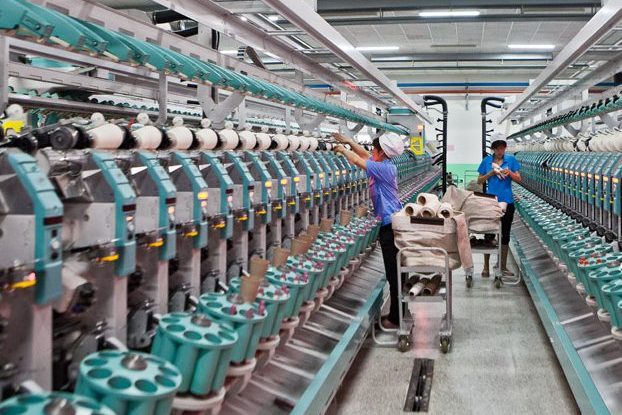Steam Boiler in Textile Mill Workflow
In any Textile mill, a reliable steam boiler is the heartbeat of wet‑processing and heat‑treatment. Whether it’s scouring yarn, high‑temperature dyeing, or stenter‑frame drying, the boiler must deliver consistent pressure and temperature. Selection and integration of the right Textile steam boiler directly affect energy consumption, production rate, and fabric quality.
Key Textile Processes Driven by Steam Boilers
-
Scouring & Desizing (3–5 bar, 100–105 °C): Low‑pressure saturated steam gently removes oils and size, preparing fibers for uniform dye uptake.
-
Dyeing & Printing (6–10 bar, 135–140 °C): High‑pressure steam ensures deep color penetration and fixation in jet, overflow, or continuous pad machines.
-
Drying & Heat‑Setting (160–200 °C): Steam‑heated thermal oil heaters or direct injectors control fabric shrinkage, hand, and dimensional stability.
-
Spinning/Weaving Humidification: Steam‑based humidifiers maintain 65–75% RH in the shed, reducing yarn breakage and static buildup.
Why Choose a Condensing Steam Boiler (WNS Series)
For Textile plants pushing efficiency, the WNS integrated condensing steam boiler is a strong candidate:
-
Integrated Condensing Design
The boiler body, economizer, condenser, and feed‑water tank form a compact unit—cutting installation time and thermal losses. -
Enhanced Heat Exchange
Upgraded wing‑tube elements boost heat‑transfer area by 20%, trim exhaust temperature by 20–30 °C, and raise thermal efficiency to 100–104% (LHV). In field tests, CE‑certified configurations hit 107% LHV through advanced latent‑heat recovery. -
Rapid Startup & Footprint Savings
Wing‑tube condensation tech halves steam‑up time and cuts boiler volume by 40%, freeing valuable plant floor space—ideal for cramped Textile mill boiler rooms. -
Intelligent Control
Built‑in PLC system now offers real‑time fault and scale detection, plus fully configurable operating modes to match fluctuating dye‑and‑dry cycles. -
Flexible Fuel Options
Runs on natural gas, city gas, LPG, diesel or heavy oil—alignment with plant fuel strategies and emissions targets. Maximum operating pressure reaches 3.82 MPa.
Engineering Integration Tips
-
Match Turndown to Load: Mills swing between low‑pressure humidification and high‑pressure dyeing; aim for at least 10:1 turndown.
-
Economizer & Condenser Sizing: Bigger economizer surfaces reclaim more flue‑gas heat—vital when feed‑water enters below 60 °C.
-
Water Treatment: Multi‑stage softening plus reverse‑osmosis prevents scale in high‑efficiency condensers.
-
Emission Controls: Verify local NOₓ limits (often <30 mg/Nm³) and install low‑NOₓ burners or SCR as needed.
View Condensing Steam Boiler Price List
Textile Mill Steam Boiler FAQ
Can a condensing steam boiler handle both dyeing and drying loads?
Yes. The WNS design’s wide turndown and fast steam‑up let one unit service low‑pressure humidification in spinning halls and high‑pressure dye jets without lag.
How much floor space can I save?
Compared to standalone economizer + boiler setups, you’ll see up to 30–40% less footprint—critical where mill expansions are constrained.
What maintenance does the integrated condenser need?
Inspect tube surfaces annually, monitor condensate drains monthly, and perform soft‑blowdown based on TDS sensors built into the PLC.
Is hydrogen blending possible?
Yes—these boilers are certified for up to 20% H₂ by volume, future‑proofing mills migrating to low‑carbon fuels.
By specifying a WNS series condensing steam boiler, Textile mills gain precise steam control, higher thermal efficiency, and a compact, low‑loss installation. This translates directly into lower fuel bills, tighter process control, and consistent fabric quality—with minimal operator intervention.
Get your best price
Quickly compare 3 FREE quotes
- Engineer quick quote
- The overall delivery speed is fast
- Financial choice
- Low installation costs and cost savings
25 years+ of boiler R&D
More than 20 innovative technologies



